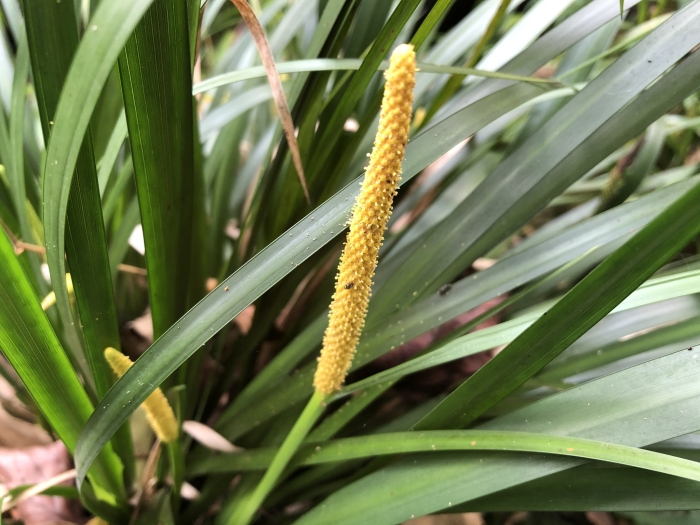Japanese Sweet Flag
(Acorus gramineus)
Japanese Sweet Flag (Acorus gramineus)
/
/

黃美滿
CC BY 4.0

























Estimated Native Range
Summary
Japanese sweet flag is valued for its ability to form dense, evergreen ground cover in wet areas, making it an excellent choice for water gardens, pond edges, and bog gardens. It is also used in traditional medicine and as an ornamental plant in freshwater aquaria. This plant prefers full sun to part shade and requires consistently moist to wet soil conditions. While it can tolerate a range of soil types, it prefers acidic to neutral pH levels. It is propagated by division of the rhizomes, which should be planted in shallow water or very moist soil. Care should be taken as Acorus gramineus can spread aggressively in favorable conditions, potentially becoming invasive.CC BY-SA 4.0
Plant Description
- Plant Type: Herb
- Height: 0.5-1 feet
- Width: 0.5-1 feet
- Growth Rate: Moderate
- Flower Color: N/A
- Flowering Season: Spring, Summer
- Leaf Retention: Evergreen
Growth Requirements
- Sun: Full Sun, Part Shade
- Water: High
- Drainage: Slow
Common Uses
Bank Stabilization, Border Plant, Deer Resistant, Edible*Disclaimer: Easyscape's listed plant edibility is for informational use. Always verify the safety and proper identification of any plant before consumption., Erosion Control, Fragrant, Groundcover, Low Maintenance, Potted Plant, Rabbit Resistant, Rock Garden, Salt Tolerant, Street Planting, Water Garden
Natural Habitat
Wetlands, stream banks, and pond margins in Japan, Korea, and Southeast Asia
Other Names
Common Names: Japanese Rush , Grassy-Leaved Sweet Flag , Slender Sweet Flag , Grassleaf Sweetflag , Gras-Kalmus , Jin Qian Pu , Shi Chang Pu
Scientific Names: Acorus gramineus , Acorus pusillus , Acorus gramineus var. pusillus , Acorus gramineus subsp. gramineus , Acorus macrospadiceus , Acorus xiangyeus , Acorus gramineus subsp. pusillus , Acorus gramineus subsp. japonica , Acorus gramineus subsp. macrospadiceus , Acorus gramineus var. flavomarginatus
GBIF Accepted Name: Acorus gramineus Aiton